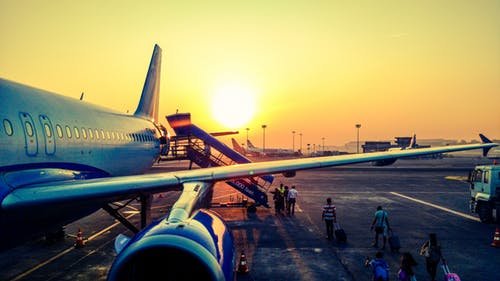What Are The Four Main Types Of Airport Lighting?

If you are an explorer, a trill and adventure seeker or even a business personal it’s safe to assume that you have flown in a plane at least once in your lifetime. Accordingly, on the off chance that you’ve been to any significant air terminal around evening time, you’ve most likely seen that there are many sorts of lights, running from blazing white or yellow to consistent red, green, and blue. Air terminal lighting is basic and a vital need for airplane working around evening time.

General Air Terminal Lighting
This type of lighting is composed of cant be missed air terminal guide and any admonition lights on towers, structures, and development hardware. The air terminal beacon is an enormous, ground-breaking, pivoting light that is exceptionally obvious from miles away. The public used air terminal beacons are basically pivoted to green and white. Military air terminals turn green and white however have two white lights for each green light, consequently separating themselves from regular citizen air terminals.
Heliports turn between green, white, and yellow lights. Pilots can without much of a stretch distinguish an air terminal around evening time from its reference point, making it probably the most straightforward checkpoint for pilots while exploring on a night flight. Air traffic organizers may kill the reference point on and off depending on the necessity, or it might be set on a specific timer.
Taxiway Lighting
The taxiway consists of four main types of lights, which indicate the way for planes to go or return from a runaway. Taxiway edge lights: These lights are blue in shading and located in the line of the taxiway. Air terminals frequently have green runway centerline lights too, clearance bar lights: the lights are Set inside the taxiway, these lights are consistent and yellow and are intended to enhance the visibility of a hold position line or a taxiway crossing point around evening time, Stop bar lights:
These in-asphalt lights are consistently red and stretch out over the runway at a hold brief line, the region where a taxiway meets the airstrip, they are intended to keep a pilot from departure the taxiway when their flight would be at risk for causing an impact on a flight strip. When a pilot is vacant onto the runway, the air traffic controller will kill the stop bar lights. And finally Runway monitor lights: A couple of two blazing yellow lights that are situated at each side of the taxiway at the hold short line, the runway watch lights are intended to cause to notice the hold short line.

Runaway Lights
This type of airport lighting information includes five main types of specific runaway lights. Namely runway end identifier lights, runway edge lights, runway centerline lighting system, touchdown zone lights, land and hold short lights and the runaway status lights every type of this lights has its own specified task which assists the pilots and other airports personal to effectively and efficiently run the airport terminal and safeguard the passages who are on board the plane.
Approach Lighting
Visual float slant pointers are intended to give pilots a visual guide during their drop to help keep up a balanced out path. They come in two kinds namely visual methodology slant markers (VASIs) and accuracy approach way pointers (PAPIs), every one of which has various sorts of game plans and the two of which give pilots a smart thought whether they’re on the skim way for a steady and stable approach.